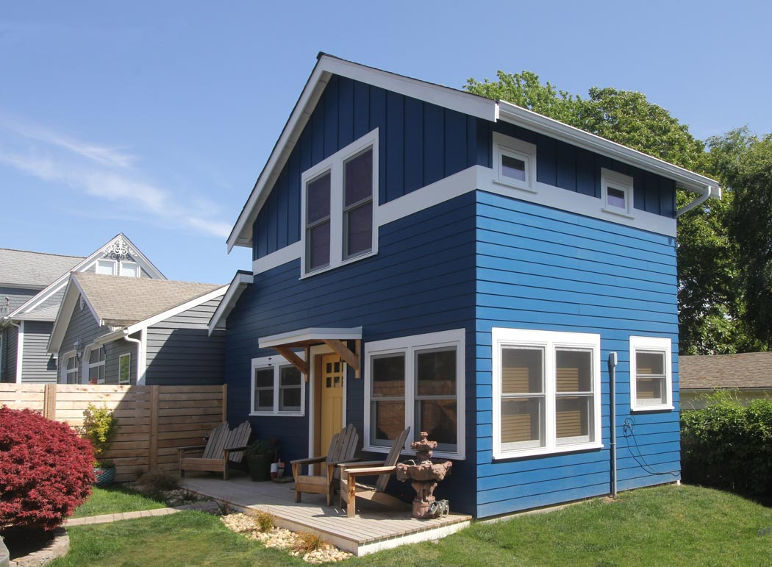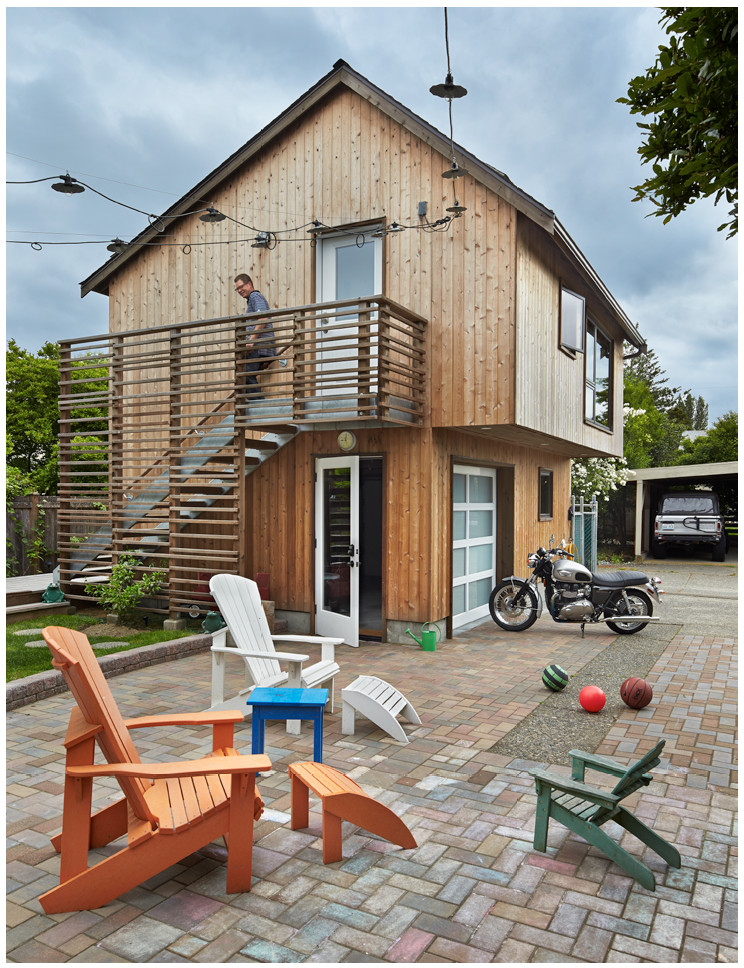Does adding more new homes to a prospering city help or hurt affordability? Few housing policy debates are as tangled or enduring. Good people with aligned affordability goals disagree. There are those who think the answer is obvious because most new homes are fancy and expensive. And those who think the answer is obvious because prices always go up when there aren’t enough homes for everyone who wants one.
Evidence and analysis has put me decidedly in the latter group, with the caveat that at the very local level—say, a few city blocks—affordability and displacement impacts may stray from the broader trend where scarcity of homes means higher rents and more displacement. Across a city or region, the best available studies show us that when there’s a shortage, building more pulls down on prices and rents, helping more people afford to stay in their homes.
Still, any talk of modifying laws to make more room for new homes invariably reignites the debate. For example, Seattle recently proposed updating rules to allow more mother-in-law apartments and backyard cottages. Opponents claimed that doing so would harm affordability and escalate displacement of lower-income residents. A city hearing examiner swallowed those claims when ruling to uphold a legal appeal of the proposal.
Here’s the thing: a booming, housing-short city such as Seattle will never dig its way out of the affordability hole without consensus on the core principle that building new market-rate homes is a necessary part of the solution. Necessary but not sufficient, for sure, because the market cannot deliver homes inexpensive enough for people low on the economic ladder—they need support; they need subsidies. But absolutely necessary for those community supports and subsidies to succeed.
My Sightline colleagues and I—and many other researchers—have clacked out thousands upon thousands of words (here, here, here, here, here, here, here, here, here, here, here, here, here, here) making the case for robust homebuilding to improve affordability. But for many people, it’s a counterintuitive argument: that new market-rate homes suppress rent inflation all the way down the market. In the public debate, it stands little chance against soundbites such as “luxury housing is the problem.” So we recently took a different tack, producing a short animation that invokes an analogy to the kids’ game of musical chairs. In short: when there aren’t enough homes, the wealthy always get a chair and the poor end up on the floor—without a home.
How ADUs help affordability by adding more chairs
Let’s see how our little cartoon might shed light on the above-mentioned Seattle debate over accessory dwelling units (ADUs).
Opponents argue that making it easier to build ADUs will stimulate the loss of lower cost single-family houses. They assume that constructing a new house with ADUs is more profitable than building just a house alone. They conclude that with ADU liberalization, more builders will scoop up more of the city’s cheapest houses and replace them with expensive new ones plus ADUs, thereby spurring the displacement of low-income families and the depletion of the city’s affordable housing stock.
The flaw in their argument is they ignore the benefits of a new ADU home—in fact, two (under new rules proposed for Seattle, single-family lots will be allowed to hold both an in-law apartment inside the house and a cottage in the back yard). The new main house may be pricier than the one it replaced, but the builder has also put two additional, lower-cost chairs in the game. And that means two more lower-income families end up with a home in the city.
In contrast, under Seattle’s status quo regulations that hamper ADU construction, plenty of single-family houses fall to the wrecking ball anyway, typically replaced by one “McMansion” house that’s as large as possible—and therefore as expensive as possible too. In our video, we showed what happens in the case where three families compete for two houses, and the poorest one is left without. Then a third house is added to the mix one house becomes available to the poorest family. To illustrate the “no-ADU” scenario, the video would instead show the smaller of the two original houses replaced by a giant one. The lowest-income family would still be left without a home.
The upshot: Seattle’s status quo rules compel the creation of luxury housing in increasingly exclusive parts of the city while doing nothing to ease displacement. On top of that, ADU restrictions add fuel to the single-family demolition fire because the resultant loss of potential new ADU homes makes the city’s housing shortage worse and drives up prices faster.
How adding chairs tames the critical problem: economic displacement
For an established city to gain population without sprawling and pushing people away from jobs and opportunity, building new, higher-density housing must be part of the solution. Some opponents of homebuilding fixate on displacement caused by demolitions to make way for new homes (physical displacement), but they overlook the vastly larger cause: economic displacement, when there’s a lack of housing, fierce competition for what’s available, and rents get bid up beyond what many households can pay. In Seattle, economic displacement pushes out at least ten times more people than physical displacement.
The only way to tame this trend is to reform the rules so that homebuilders can add more chairs to the game. It works out the same way whether the change is modest, such as legalizing ADUs, or major, such as an upzone to allow 1,000-foot condo towers: the city may lose some cheaper, older housing, but it will win on affordability overall, with fewer vulnerable people displaced.
Unfortunately, many people do not see how homes built by the private market, even when expensive, ultimately help everybody up and down the economic ladder to be able to afford to live in the city too. Case in point, Seattle’s hearing examiner asserted that allowing more ADUs would actually deprive the city of affordable housing. But if Seattle policymakers can’t defend the liberalization of ADU rules against specious claims that it worsens affordability, then they can’t defend any proposed upzone—no matter how large or small—for the very same reasons. The same goes for cities facing housing shortages throughout Cascadia and beyond.

Seeing the big picture on affordability
Fortunately, Seattle has an opportunity to set the record straight in its Environmental Impact Statement (EIS) for the ADU proposal. I recently recommended ways to do that in a detailed comment letter to the City. To summarize: the analysis should fully account for the market-wide effects on prices, rents, and economic displacement under the conditions of a housing shortage; it should appraise the net impacts of adding ADUs on rents, prices, and displacement, on average throughout the city. In fact, that big picture approach is indispensable for defending all manner of changes to regulations intended to help affordability by enabling more homebuilding. (Ironically, Washington’s State Environmental Policy Act discourages this kind of holistic analysis, as I covered in a previous article).
The musical chairs analogy isn’t perfect. Some might argue that home types vary more than chairs, or that expensive condos may be kept vacant, or that an empty home might draw someone from another city. It’s true that the housing market is more complicated than a children’s game. But the complexities are mostly on the margins; they do not change the fundamental dynamic: more new homes means less displacement
In the huge game of musical chairs playing out across Seattle’s housing market, the most vulnerable families will keep getting pushed out until that game provides as many chairs as people who want to play. We need more homes, of all shapes and sizes. Adding new homes anywhere and everywhere on the price spectrum helps affordability: it’s a reality that Seattle’s ADU EIS can help cement, and that any city struggling with affordability must embrace.
NOTES
Through November 16, 2017, you can submit your suggestions for the scope of the Environmental Impact Statement that Seattle will conduct on its proposal to update ADU regulations.
[list_signup_button button_text=”Like what you|apos;re reading? Get our latest housing research here.” form_title=”Housing Shortage Solutions” selected_lists='{“Housing Shortage Solutions”:”Housing Shortage Solutions”}’ align=”center”]


Comments are closed.